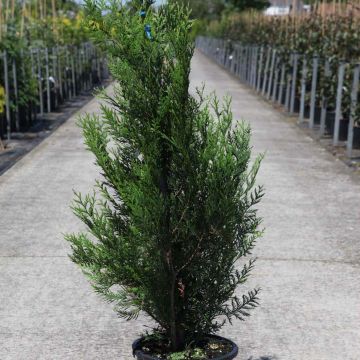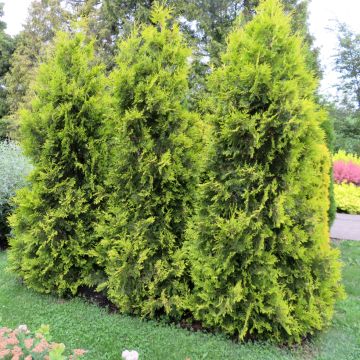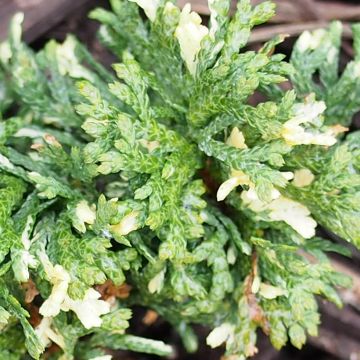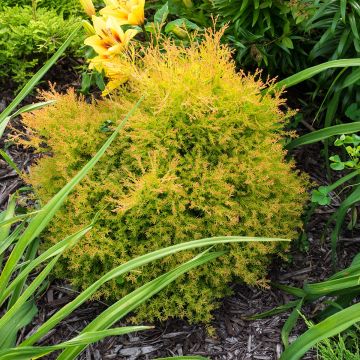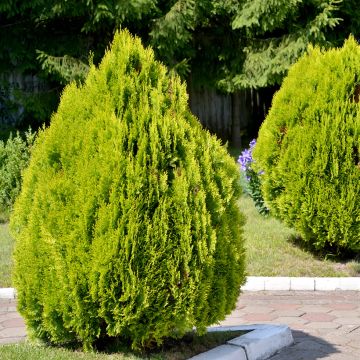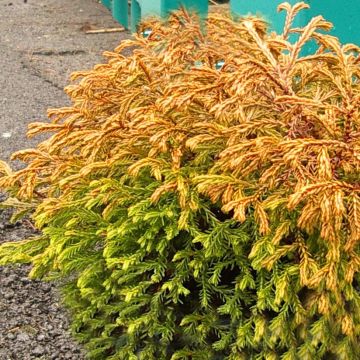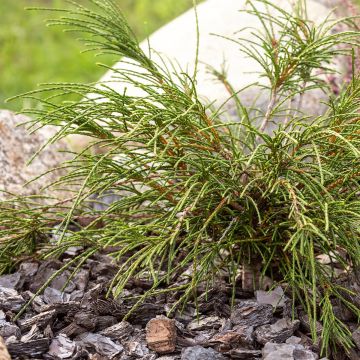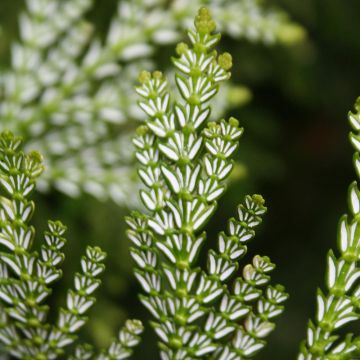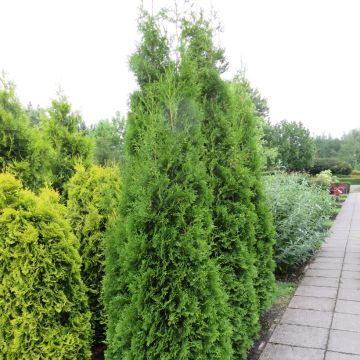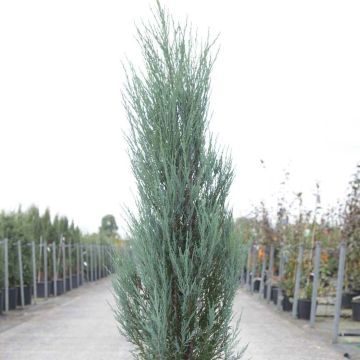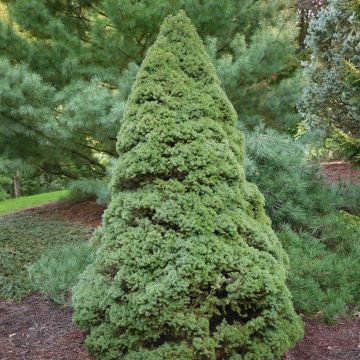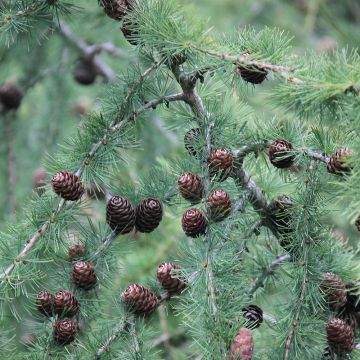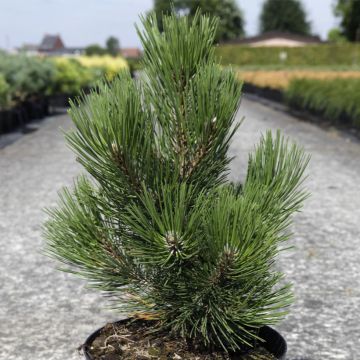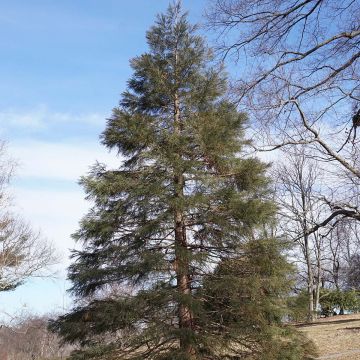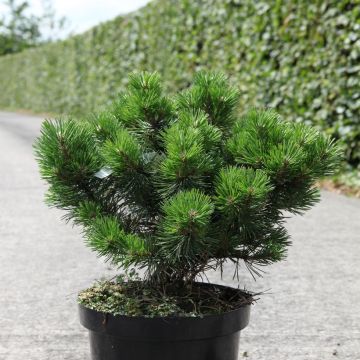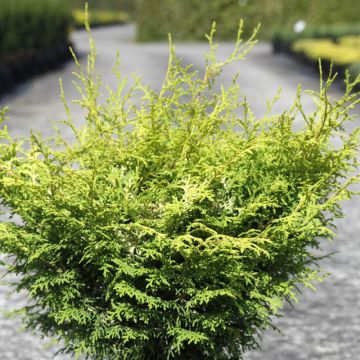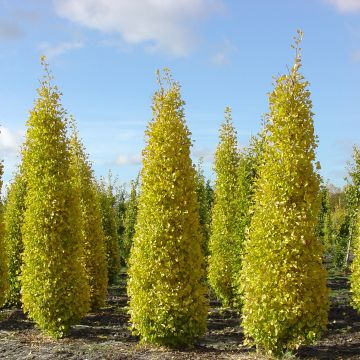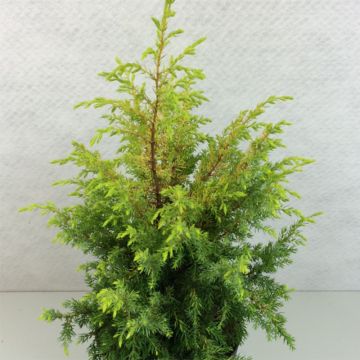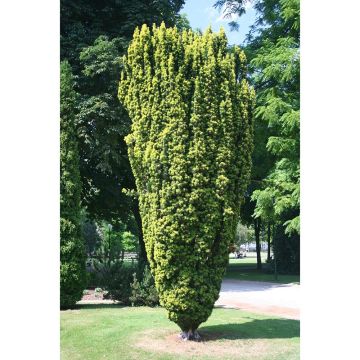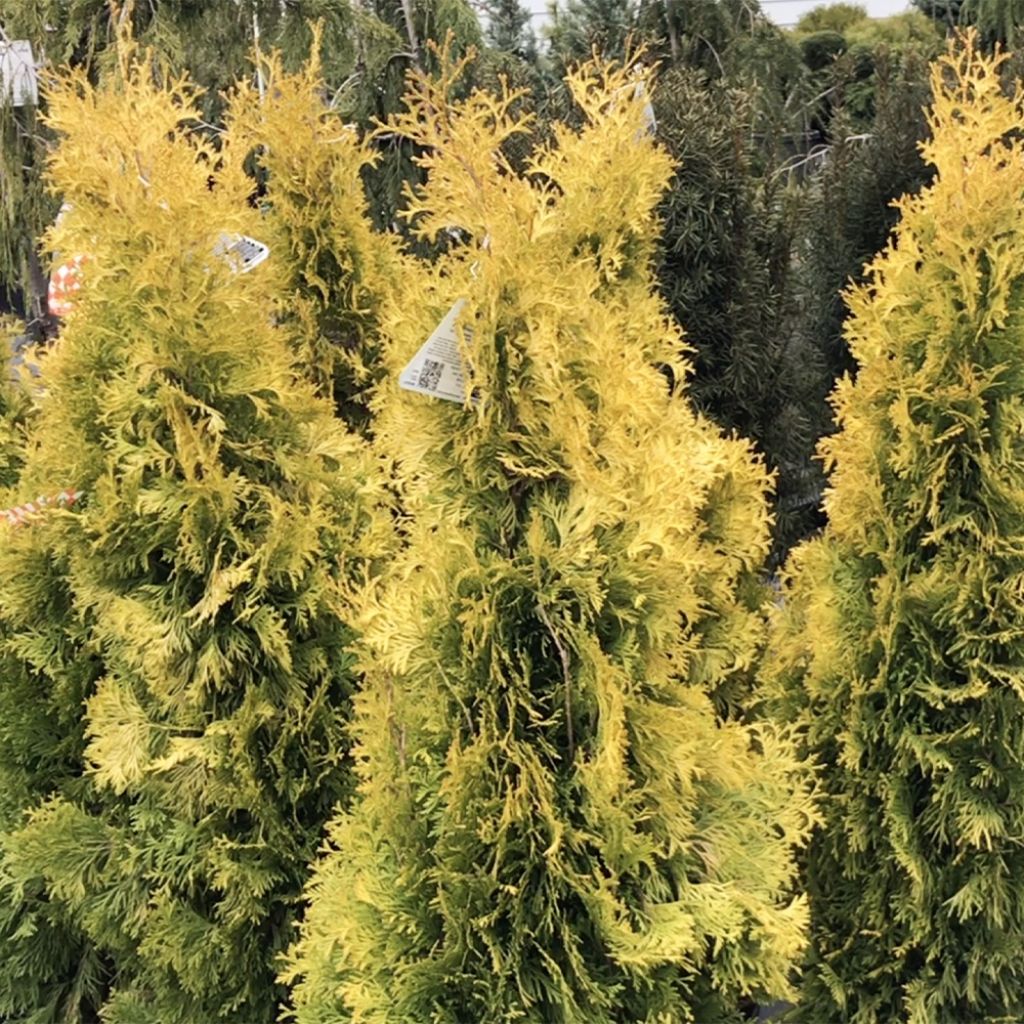

Thuja occidentalis Jantar - Canadian Arborvitae
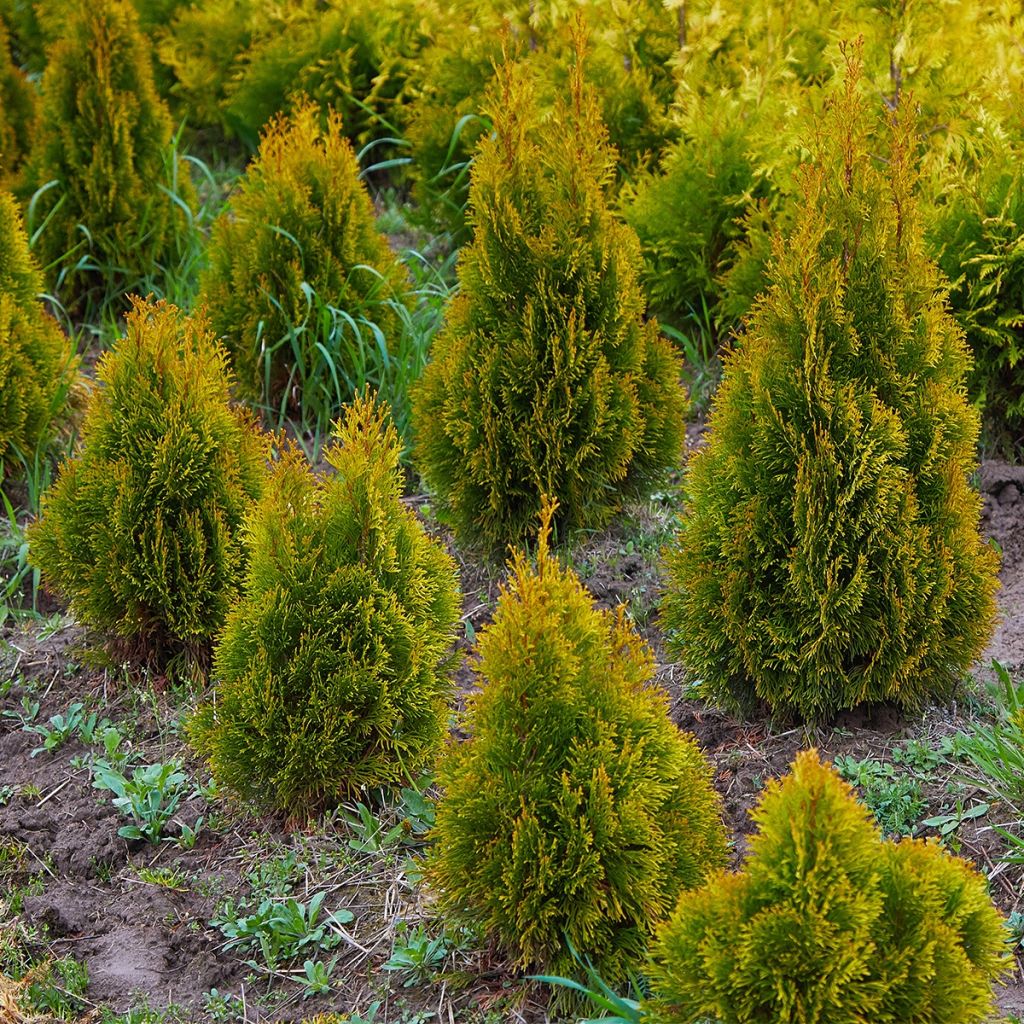

Thuja occidentalis Jantar - Canadian Arborvitae
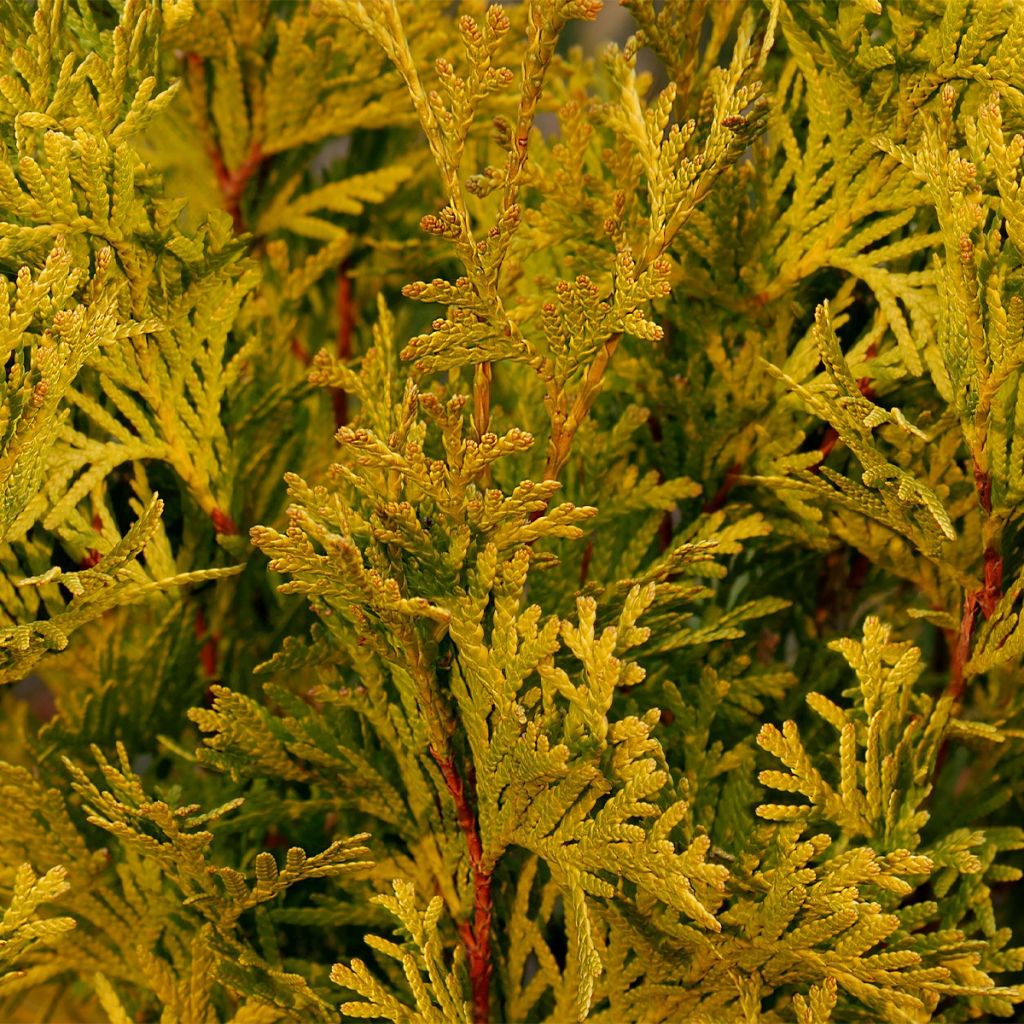

Thuja occidentalis Jantar - Canadian Arborvitae
Thuja occidentalis Jantar - Canadian Arborvitae
Thuja occidentalis Jantar
Eastern White Cedar, Northern White Cedar, American Arborvitae, Eastern Arborvitae
This item cannot be shipped to the selected country
Delivery charge from €5.90
More information
Schedule delivery date,
and select date in basket
This plant carries a 24 months recovery warranty
More information
We guarantee the quality of our plants for a full growing cycle, and will replace at our expense any plant that fails to recover under normal climatic and planting conditions.
From €5.90 for pickup delivery and €6.90 for home delivery
Express home delivery from €8.90.
Does this plant fit my garden?
Set up your Plantfit profile →
Description
The Thuja occidentalis 'Jantar' is a small conifer that forms a well-proportioned slender cone and charms with its amber-yellow foliage all year round. Growing relatively slowly, its growth is also limited, as it reaches a maximum height of 3m (10ft) or 4m, thus forming superb hedges requiring little pruning maintenance. It will also be very interesting when planted in isolation in a small garden, or in association in a mixed border. It is a very hardy conifer and not demanding on soil conditions.
The Thuja occidentalis, the Eastern White Cedar or Northern White Cedar, is sometimes called the Eastern Arborvitae or simply Arborvitae. It is an evergreen conifer of the Cupressaceae family, which includes many other ornamental genera such as Cypress, Chamaecyparis, Libocedrus, Thujopsis, and all Juniperus (Junipers). Native to northeastern North America, this Thuja is distributed over a wide geographic range that perfectly reflects the plasticity of its living conditions. In nature, it reaches a height of 15 to 20m (49 to 66ft), adopting a beautiful conical shape and a trunk covered with highly decorative bark. It is a very hardy species, well adapted to temperate climates and poor, moist, or occasionally dry soils. Its wood is almost rot-resistant, light, fragrant, and easily flamable, making it suitable for multiple uses. It has given rise to more than 300 cultivars.
The 'Jantar' variety is a Polish selection, as hardy as one can imagine due to its origin (-30°C approximately). Its foliage has a beautiful yellowish amber hue, which remains throughout the year. Very bright, this conifer is particularly precious for brightening up the gloomy winter days! This Thuja reveals an aromatic foliage when crushed, consisting of flattened branches arranged in planes and covered with scale-like leaves 3 to 5mm long. Overlapping each other, the leaves give the branches a flat appearance. The tips of these branches have a beautiful amber point. Oriented in different planes, the branches give the plant a frilly aspect that is quite appealing. Its habit is distinctly columnar, making it a beautiful subject for planting in isolation in small gardens. As it does not grow much (up to 3m (10ft) maximum for about 1m (3ft) wide), it is also an excellent hedge plant for those who do not wish to be slaves to their hedge trimmer or shears!
Easy to grow like its counterparts, this Thuja thrives in most soils, from acidic to moderately calcareous, preferably moist and well-drained. Tolerating winter winds quite well, extremely hardy, it is an ideal conifer for beginners.
The 'Jantar' Western Thuja will find its place in a small garden or in a large rockery, grouped in a small free screen or planted in groups of three near an entrance. It pairs well with more disheveled shrubs - such as the Salix purpurea Nana, with its tousled habit and gray-blue foliage that will pleasantly contrast with its amber-yellow. For an even more colorful scene, opt for the Cotinus coggygria Dusky Maiden, with its foliage changing with the seasons, purple, orange, or bright red, in addition to its remarkable feathery flowering. In a contemporary garden, you can associate it with other graphic plants, and many conifers will be perfect companions. The Pinus densiflora Alice Verkade with its globular habit, dark green needles, and lighter shoots, or the Cryptomeria japonica 'Globosa Nana' with its unusual appearance and green foliage turning bronze in winter, will create a beautiful scene alongside our 'Jantar' Thuja.
Report an error about the product description
Thuja occidentalis Jantar - Canadian Arborvitae in pictures
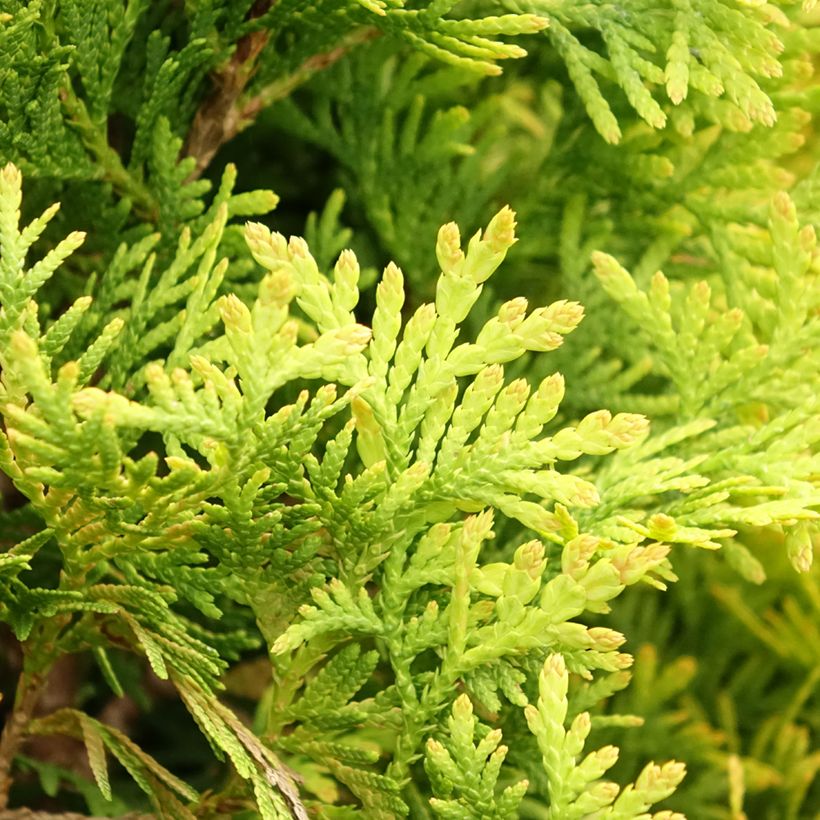

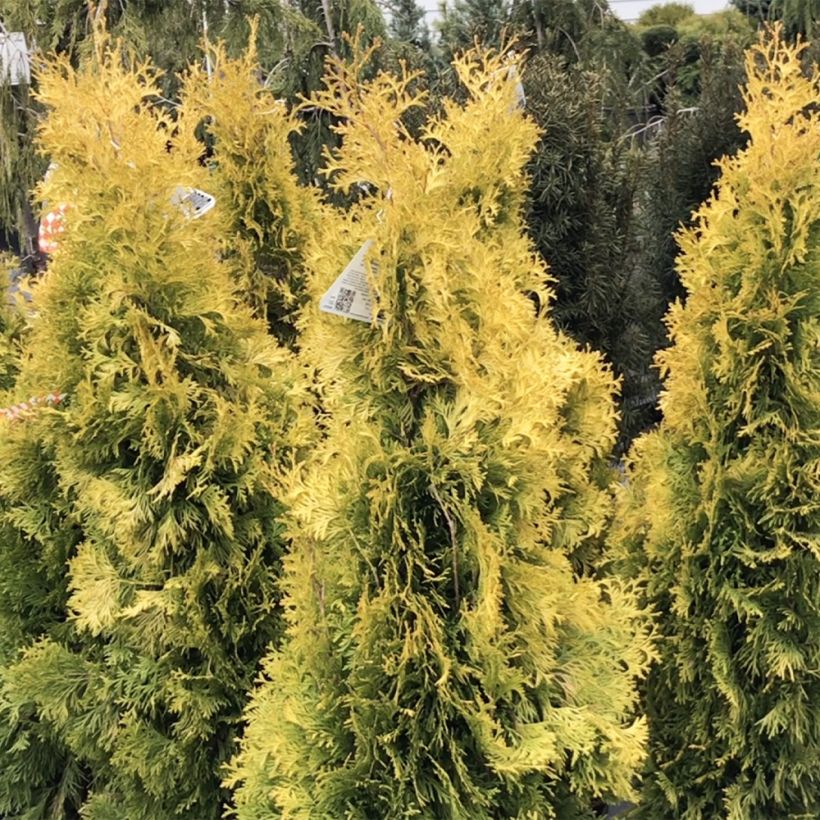

Plant habit
Foliage
Botanical data
Thuja
occidentalis
Jantar
Cupressaceae
Eastern White Cedar, Northern White Cedar, American Arborvitae, Eastern Arborvitae
Cultivar or hybrid
Other Thuya - Thuja
Planting and care
The Thuja occidentalis 'Jantar' is planted from September to November and from February to April in deep, ordinary, but loose and not too heavy soil, acidic, neutral or even slightly limey, but not too arid. It only fears scorching temperatures and prolonged drought. It prefers to grow in the sun, or possibly in partial shade (rather in hot climates). Soak its root ball in a bucket of water before planting. Optionally, add organic amendment to the planting hole, and water generously in the first years, and in case of prolonged drought. In very poor soil, you can apply a special conifer fertilizer every year in April, and weed the soil in summer.
This hardy conifer (down to at least -30 °C) does not really require pruning, but it is tolerated, only on young shoots. Indeed, old wood never "re-sprouts". You can optionally enhance its conical habit with a few snips of shears in the first year, but afterwards, it generally shapes itself.
Planting period
Intended location
Care
This item has not been reviewed yet - be the first to leave a review about it.
Conifers
Haven't found what you were looking for?
Hardiness is the lowest winter temperature a plant can endure without suffering serious damage or even dying. However, hardiness is affected by location (a sheltered area, such as a patio), protection (winter cover) and soil type (hardiness is improved by well-drained soil).

Photo Sharing Terms & Conditions
In order to encourage gardeners to interact and share their experiences, Promesse de fleurs offers various media enabling content to be uploaded onto its Site - in particular via the ‘Photo sharing’ module.
The User agrees to refrain from:
- Posting any content that is illegal, prejudicial, insulting, racist, inciteful to hatred, revisionist, contrary to public decency, that infringes on privacy or on the privacy rights of third parties, in particular the publicity rights of persons and goods, intellectual property rights, or the right to privacy.
- Submitting content on behalf of a third party;
- Impersonate the identity of a third party and/or publish any personal information about a third party;
In general, the User undertakes to refrain from any unethical behaviour.
All Content (in particular text, comments, files, images, photos, videos, creative works, etc.), which may be subject to property or intellectual property rights, image or other private rights, shall remain the property of the User, subject to the limited rights granted by the terms of the licence granted by Promesse de fleurs as stated below. Users are at liberty to publish or not to publish such Content on the Site, notably via the ‘Photo Sharing’ facility, and accept that this Content shall be made public and freely accessible, notably on the Internet.
Users further acknowledge, undertake to have ,and guarantee that they hold all necessary rights and permissions to publish such material on the Site, in particular with regard to the legislation in force pertaining to any privacy, property, intellectual property, image, or contractual rights, or rights of any other nature. By publishing such Content on the Site, Users acknowledge accepting full liability as publishers of the Content within the meaning of the law, and grant Promesse de fleurs, free of charge, an inclusive, worldwide licence for the said Content for the entire duration of its publication, including all reproduction, representation, up/downloading, displaying, performing, transmission, and storage rights.
Users also grant permission for their name to be linked to the Content and accept that this link may not always be made available.
By engaging in posting material, Users consent to their Content becoming automatically accessible on the Internet, in particular on other sites and/or blogs and/or web pages of the Promesse de fleurs site, including in particular social pages and the Promesse de fleurs catalogue.
Users may secure the removal of entrusted content free of charge by issuing a simple request via our contact form.
The flowering period indicated on our website applies to countries and regions located in USDA zone 8 (France, the United Kingdom, Ireland, the Netherlands, etc.)
It will vary according to where you live:
- In zones 9 to 10 (Italy, Spain, Greece, etc.), flowering will occur about 2 to 4 weeks earlier.
- In zones 6 to 7 (Germany, Poland, Slovenia, and lower mountainous regions), flowering will be delayed by 2 to 3 weeks.
- In zone 5 (Central Europe, Scandinavia), blooming will be delayed by 3 to 5 weeks.
In temperate climates, pruning of spring-flowering shrubs (forsythia, spireas, etc.) should be done just after flowering.
Pruning of summer-flowering shrubs (Indian Lilac, Perovskia, etc.) can be done in winter or spring.
In cold regions as well as with frost-sensitive plants, avoid pruning too early when severe frosts may still occur.
The planting period indicated on our website applies to countries and regions located in USDA zone 8 (France, United Kingdom, Ireland, Netherlands).
It will vary according to where you live:
- In Mediterranean zones (Marseille, Madrid, Milan, etc.), autumn and winter are the best planting periods.
- In continental zones (Strasbourg, Munich, Vienna, etc.), delay planting by 2 to 3 weeks in spring and bring it forward by 2 to 4 weeks in autumn.
- In mountainous regions (the Alps, Pyrenees, Carpathians, etc.), it is best to plant in late spring (May-June) or late summer (August-September).
The harvesting period indicated on our website applies to countries and regions in USDA zone 8 (France, England, Ireland, the Netherlands).
In colder areas (Scandinavia, Poland, Austria...) fruit and vegetable harvests are likely to be delayed by 3-4 weeks.
In warmer areas (Italy, Spain, Greece, etc.), harvesting will probably take place earlier, depending on weather conditions.
The sowing periods indicated on our website apply to countries and regions within USDA Zone 8 (France, UK, Ireland, Netherlands).
In colder areas (Scandinavia, Poland, Austria...), delay any outdoor sowing by 3-4 weeks, or sow under glass.
In warmer climes (Italy, Spain, Greece, etc.), bring outdoor sowing forward by a few weeks.

































